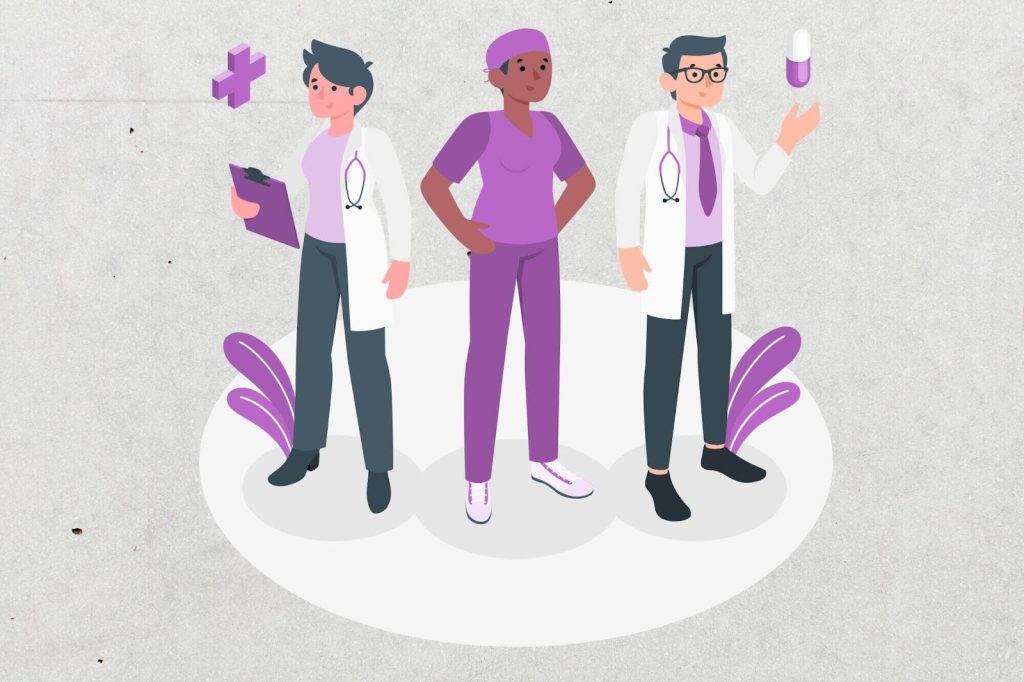Quick Overview
CPD (Continuing Professional Development) and CME (Continuing Medical Education) are two major forms of lifelong learning. While CPD applies across industries, CME is specific to healthcare professionals and ensures medical practice stays evidence-based and up to date.
This blog will walk you through:
✅ What CPD is and how it supports professionals across industries.
✅ What CME is and its role in keeping healthcare practitioners updated.
✅ Key differences in target audience, content, and accreditation bodies.
✅ Similarities in promoting lifelong learning and compliance with regulations.
✅ How CPD and CME support career growth and industry relevance.
✅ The importance of both for personal development and professional advancement.
✅ Guidance on choosing between CPD and CME based on career goals.
CPD and CME are two of the most notable forms of professional education post-qualification. They are aimed at improving and maintaining the professional skills of individuals during their working lifespans. In this guide, the major differences between CPD and CME, such as their target demographics and areas of focus, are outlined.
CPD encompasses the training of a range of professionals in both technical and soft skills across various industries. At the same time, CME refers to the continuous professional development of medical professionals by focusing on the latest medical advancements and best practices in the healthcare sector.
What is CPD (Continuing Professional Development)?
Definition and Purpose of CPD
Continuing Professional Development, also known as CPD, is related to the updating, improving, and widening of knowledge and skills by professionals throughout their careers. CPD is applicable to all sectors and forms an important part of developing professional competency. It is designed to maintain professionalism by helping professionals acquire new capabilities, keep pace with technological advancements and improve or master new technologies and practices.
CPD can be adapted and utilised across many sectors, such as business, teaching, law, engineering and more. It allows professionals to be proactive with their learning, ensuring that their skills remain up to date and they are able to react to any changes in their sector. It allows individuals to remain professionals by continuing to learn, develop and enhance their careers.
Broad Professional Development in CPD
CPD programmes are inherently holistic and tend to focus on professional development in the widest sense. This includes both hard skills – specific to a particular trade or occupation (such as technical, managerial or administrative skills) – and soft skills (such as communication, leadership or problem-solving). For example, a marketer could take CPD courses on the latest tools in digital marketing but may also take a course in running meetings or improving strategic thinking. The overall flexibility and diversity of CPD mean that professionals can select learning that suits their career aspirations in the short term as well as in the long term.
CPD can take many forms, including online courses, workshops, conferences, and even mentoring – with the goal of helping professionals engage with multiple approaches to learning that develop their technical areas of expertise as well as their overall effectiveness at work.

CPD’s Applicability Across Industries
CPD is a fundamental part of professions where staying abreast of regulations or procedures, such as healthcare and law, is vital. However, it’s also important in fields such as engineering, IT, education and business. For instance, an engineer might undertake CPD to keep up with new technologies, new materials or new safety protocols. At the same time, an educator might do CPD to improve the efficacy of their students’ learning via more effective teaching methods.
As such, it is appealing to individuals at all levels, from an entry-level employee to the most senior executive. CPD helps professionals become more versatile and develop the kind of broad-based skill set we have described – a skill set that will help them flourish in any job opportunity that follows. This generalisability explains why CPD is so central to careers in all sectors.
What is CME (Continuing Medical Education)?
Definition and Focus of CME
This type of professional development called Continuing Medical Education, or CME, is designed for doctors, nurses, pharmacists and other health practitioners. CME programmes exist to help medical practitioners stay informed about the latest medical research into treatments, technologies and medical interventions. CME aims to enable health practitioners to maintain their competencies in order to provide the best possible care for their patients.
CME is mandated for most medical professionals as a requirement for maintaining licensure and certification. It enables clinicians to keep abreast of important changes in medical science, such as updates to clinical practice guidelines, new treatment strategies for the care of the patient, and new medical devices and technologies. CME, in the form of conferences, seminars, workshops and accredited online activities, empowers the practitioner to engage in lifelong learning that directly impacts clinical outcomes for their patients.
Keeping Medical Professionals Updated
One of the cardinal goals of CME, after all, is helping healthcare professionals stay abreast of the science relevant to their fields of practice so that they can use the most up-to-date treatment methods in their practice. CME might educate practitioners, for instance, about new surgical techniques, new developments in pharmacology, or new technologies for diagnosing disease. It exists to benefit patients by helping their doctors better care for them and keep them safe.
CME also helps physicians learn to diagnose, treat and manage illnesses; it is essential in specialities such as cardiology, oncology and paediatrics, where research and clinical trials continually change best practices and where clinicians need to keep abreast of new developments to provide the very best care. The purpose of CME is to ensure clinicians are practising the most up-to-date, evidence-based medicine possible.

Importance of CME for Maintaining Medical Licenses
For many practitioners, CME is a regulatory duty. Healthcare professionals are often required to complete CME. In the UK and the US, participating in CME is a requirement for physicians renewing their licences or certifications. Both the British Medical Association and the American Medical Association track the number of hours healthcare professionals complete to maintain their licences and certifications. Healthcare professionals are often required to accumulate a specific number of CME credits per year to remain licensed. These credits are evidence of the practitioner’s ‘commitment to lifelong learning and quality improvement’, as the US medical licensing body puts it.
CME also helps providers meet regulatory requirements, but it can also serve to organise their pursuit of specialisation. Specialists can attend CME courses focused on their fields of interest, further their mastery, improve the quality of care, and advance in their specialities.
Key Differences Between CPD and CME
Target Audience
The first, most obvious distinction is that CPD is intended for professionals in all areas, whereas CME is targeted exclusively at doctors. The professions covered by CPD range widely from business, education and law to engineering, IT and many others. It’s all about continuing to hone and update skills, whether technical or interpersonal. CPD is designed to support the process of professional career development across all sectors.
However, CME is designed specifically for doctors, nurses, pharmacists, and other medical practitioners. Thus, CME programmes are geared toward the medical profession, and accordingly, their sessions are devoted exclusively to healthcare advances, patient care, clinical practice and medical research. In order for healthcare professionals to maintain their licensure and certifications, they must remain aware of the latest medical developments.
Content Focus
A second crucial difference is the content. CPD can cover technical and soft skills, depending on the industry. In business, this might include leadership and management training, while engineers might train on new technologies or safety standards. CPD also covers skills such as communication, project management and problem-solving, which apply to most jobs.
In contrast, CME is strictly educational, and it always features medical content. CME exists to keep practicing health professionals abreast of new medical developments, clinical techniques and patient care. It’s about diagnostic procedures, surgical innovations, new diseases, new drugs and so forth. CME tries to ensure that health professionals have the latest and best information available when treating patients.
Accreditation Bodies
CPD and CME are accredited by different organizations – each with its own set of standards and requirements. For CPD, there are a number of different accrediting bodies, each serving a different type of industry. CPD can be accredited by the CPD Standards Office, which accredits CPD courses across many industries in the UK. Other bodies, such as the Institute of Leadership Management (ILM) or the Royal Institute of British Architects (RIBA), accredit CPD on an industry-specific basis.

CME is accredited by bodies that specialise in medical education, such as the Accreditation Council for Continuing Medical Education (ACCME) in the US or the Royal College of Physicians or General Medical Council (GMC) in the UK. These organisations ensure that CME is accredited only if it meets their very high standards, which include requirements for CME programmes to be evidence-informed, accurate and of value to the target learners – i.e., the people who want to update their clinical knowledge and skills.
Similarities Between CPD and CME
Lifelong Learning
Continuing Professional Development (CPD) and Continuing Medical Education (CME) are the most popular ways to encourage lifelong learning. In the fast-changing business world, where innovation is a key to success, standing still is a bad idea. If you are a professional of any kind, you need to keep up to date with the latest trends in your field. CPD and CME help professionals keep up with the latest changes in their field and remain competitive, flexible, and competent at their jobs.
As such, the commitment to lifelong learning means that professionals are constantly working to improve their knowledge base, enhance their skills, or stay current with emerging trends or innovations. For CPD participants, the focus is more on learning about new industry tools, leadership approaches or regulatory changes, while for CME participants, the focus tends to be more on learning about new medical treatments, technologies or research findings.
Certification and Compliance
Moreover, many examples of CPD and CME are mandated as part of certification and compliance. For example, many professionals, particularly in the fields of law, medicine and engineering (all of which are heavily regulated), are required to earn a specific number of CPD or CME credits a year in order to maintain professional certifications or licences. In this way, practitioners are encouraged to maintain their level of skill and stay current with industry regulations.

For instance, some medical practitioners have to complete CME in order to retain their medical licences. In contrast, other professionals in fields such as accountancy, law or education have to complete CPD in order to retain their qualifications. In either case, CPD and CME are important in helping the professional to keep their licensing bodies or regulatory organisations happy.
Flexible Learning
CPD and CME courses provide a range of learning styles to meet the needs of working professionals who have limited time to be away from the workplace. Learning styles may include online courses, webinars, seminars, workshops and conferences.
This flexibility is particularly useful for professionals who are balancing full-time work with pursuing further education such as digital learning has expanded the availability of CPD and CME, making it possible to accrue credits and upskill at one’s own pace, often from the comfort of one’s own home or office, and depending on the learning formats, at one’s convenience. The diversity of learning formats caters to working professionals from different fields with different availability of time.
Importance of CPD and CME for Professional Growth
Staying Updated with Industry Trends
One of the primary purposes of CPD and CME is to help professionals keep up with industry trends and remain competent in their fields. In every industry, new technologies, techniques, and best practices are being discovered, and professionals who want to stay competitive will benefit from being up-to-date on the latest trends. CPD and CME ensure that professionals are always learning something new, whether it is about new regulations in finance, cutting-edge medical treatments, or the latest leadership approaches.
CME helps them stay abreast of the latest developments in medical science so that patient care is of the highest possible quality. CPD does the same thing for other professionals, helping them to update their skills, better cope with new challenges, and apply new technologies or methodologies in order to stay competitive.

Career Advancement and Personal Development
CPD and CME are also career catalysts or booster doses. The continued learning of a professional inevitably translates into a higher status as an expert in one’s field, thereby making one more attractive to employers who would want to hire such an expert or to consider the professional for a promotion, a better pay package or an entirely different career path. A professional going through CPD or CME may also be able to expand their network of professional contacts, which could result in career upgrades, career opportunities, or collaborative opportunities.
Furthermore, both CPD and CME help individuals to develop professionally by equipping them with the knowledge and skills to achieve personal goals, gain self-confidence and take on more responsibility, thus leading to increased job satisfaction and fulfilment as professionals.
How to Choose Between CPD and CME
Industry Relevance
It depends on what industry you’re in. For healthcare professionals, CME is required to maintain their medical licence and keep up with new research, technology, and patient care. CME is necessary for you to be compliant with regulations and to stay current on best practices. As a healthcare professional, your work impacts others’ lives, and the care you give should be of the highest quality. This is where CME plays a role.
For those of us who don’t have a medical background, CPD is the correct term for continuing professional development. CPD is available in all areas of business and industry, from education and the law to engineering. It helps to develop technical skills through to leadership. For those of us in the non-medical world, CPD helps us keep up-to-date and relevant to our particular industry.

Career Goals
CPD and CME will also be valuable to you, depending on your career goals. For example, if you want to become a thought leader in medicine, or if you want to specialise in a certain area of medicine or stay current with clinical innovations, CME is the better approach. You can use your CME credits to sharpen your skills, gain new certifications, and even propel yourself to the top of your profession.
In contrast, if you want to develop more general workplace skills – communication, management, or technical expertise relevant to your particular industry – then CPD is the better option. CPD provides individuals with the flexibility to direct their learning in accordance with their aspirations and career goals, helping them hone their skills to reach their full potential in a constantly evolving business world. For those non-medical professionals wanting to pursue leadership or executive positions, CPD provides the perfect vehicle for lifelong development.
Conclusion
CPD is aimed at professionals in a wide variety of sectors, while CME is for those working in health care. CPD can cover a wide range of skills, while CME relates to medical advancements and patient care. The type of ‘continuing’ education best suited to your career and, therefore, the most beneficial for you will depend on the industry you work in and the role you have. However, both CPD and CME are important for maintaining professional standards, keeping you competitive in your industry, and helping you on the path to a successful long-term career.

